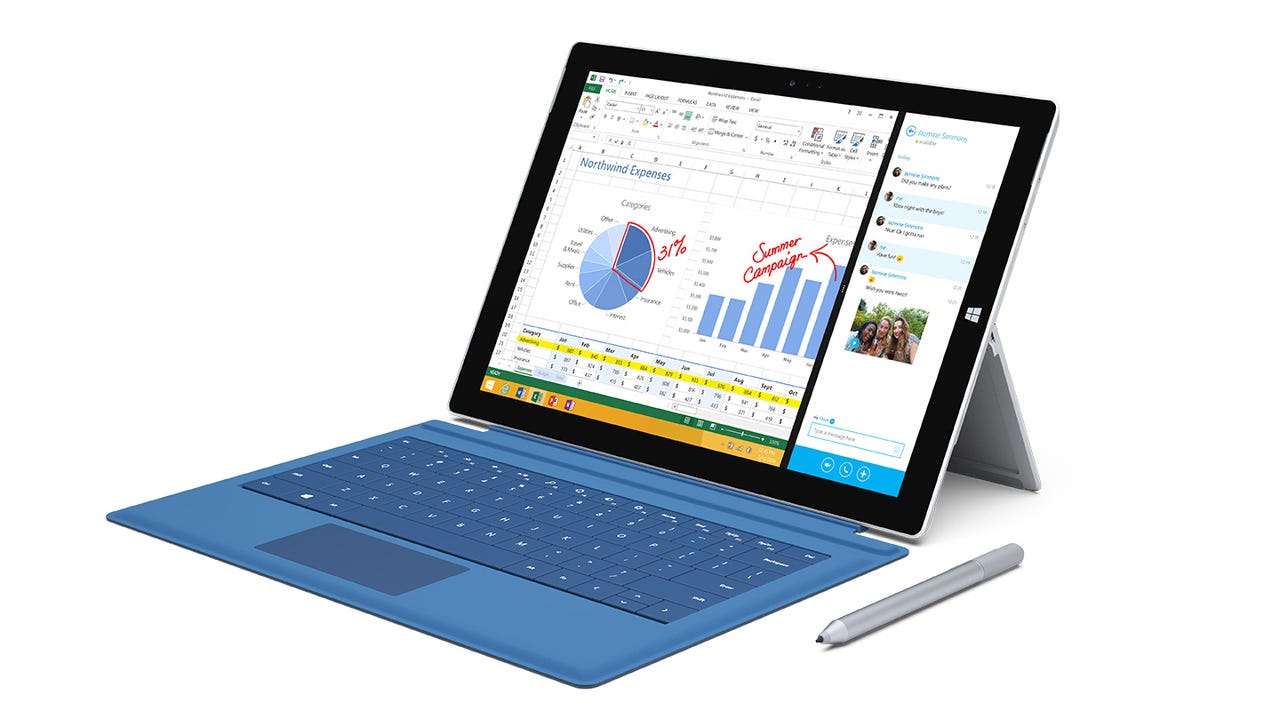Making pen cool again: How N-trig won over Microsoft for the Surface Pro 3


If you thought styluses were last seen on devices in 1990s, think again. Israel's N-trig is one of a new breed of pen input companies, recently unseating Wacom as Microsoft's pen of choice on its new Surface Pro 3 tablets.
According to Eyal Leibovitz, VP of R&D at the Israeli digital pen maker, the company had an important advantage that helped it win over Microsoft — technology that lets OEMs integrate pen and touch together on the same digitiser. "It allowed Microsoft to eliminate a layer of sensor from its new tablet, making it lighter," he said.
While removing a sensor layer doesn't sound like it would result in a much of a weight saving, every little bit helps for Microsoft's laptop-tablet hybrid. The Surface Pro 2, more of a straight tablet, weighed in at around two pounds, compared to the Surface Pro 3's slightly slimmer 1.76 pounds.
For a tablet, that's not too impressive — but Microsoft is marketing the Pro 3 as an all-round work device that can turn into a tablet when needed, complete with keyboard and a pen for note taking.
"The idea is to enable users to make use of their device in any situation, and that's where the pen comes in," Leibovitz said. "Users can type on the keyboard if they want, or shed the keyboard and use the tablet as a note taker, writing with the included N-Trig pen."
Pen input, which was big in the halcyon days of the Palm Pilot — and was pushed into a dark, distant corner by touch input, popularised by the first iPhone — is definitely making a comeback.
Dozens of pen-and-touch enabled devices are on the market already, and more are on the way, Leibovitz said.
"A lot of devices already included a touch sensor that supports pen, even if those devices currently only support touch," he said. "For those devices we have a software solution that can activate the pen component, allowing users to enjoy both."
One reason pen took a back seat was because it has a number of technical issues that touch doesn't: palm rejection, for example, in which the device has to figure out if it is the pen or a user's palm resting on the screen.
Another issue for pen has been accuracy, both in terms of input (if a user doesn't press down hard enough the device might not pick up the text) and understandability (users with less than perfect penmanship suffered with previous pen technologies). Control — ensuring that a specific area of pixels is targeted — has also been a problem, with users of previous versions of pen technology finding it very difficult to put the letters or words where they wanted to on a screen.
Leibovitz said N-trig has addressed those problems, which is why Microsoft adopted the country's technology for the Pro 3.
"Our active pen functions like a regular pen and is very accurate — often on a sub-pixel level, to ensure a high level of control — rapid refresh to accurately capture ink subtleties, and 256 distinct levels of pressure sensitivity for more exact control. We also have patented palm rejection capabilities, interchangeable tips for different pressure levels."
One company that doesn't support pen — yet — is Apple. But that may change, Lebovitz said.
"Apple has a patent for its own pen, called, naturally iPen, but no one knows when, or if, they will come out with their own pen. Remember, this is the company that declared pen dead."
Lebovitz said that he has had several discussions with Apple about N-trig's technology – but he is not reading anything into that. "They're pretty secretive," he said – and that same secret planning may be at play right now as Apple's tablet and laptop competitors adopt N-trig's technology. "We'd be very happy to have them as customers."